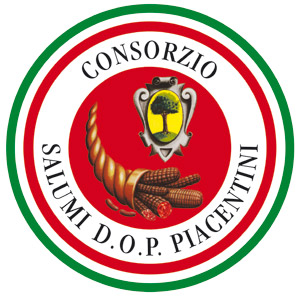History, tradition and territory
The municipal book of Piacenza and the writings of Giulio Landi, who talked about the excellent quality of the product, show that Pancetta Piacentina PDO was appreciated since the XIV century. At the beginning of 1700, Cardinal Giulio Alberoni donated hams and cheeses to facilitate the resolution of organizational and political problems in a “diplomatic” way.
Production and processing still take place today in the entire area of the province of Piacenza.
Production
Pancetta is obtained from the belly of the pig. It’s in thin layers, alternately lean and fat, which create a streaked effect. During processing, Pancetta Piacentina PDO is salted and flavored with pepper and sometimes with various types of spice like cloves, cinnamon, nutmeg and juniper berries. Once salted it is put to rest in particular places from 8 to 15 days. The success of salting is the result of the balance between the deep penetration of the salt and the limited loss of moisture during drying. Then pancetta is subjected to maturation at least 3 months from the date of salting. At the maximum of maturation, a sweet and fragrant product is obtained.
Tasting
The Pancetta Piacentina PDO has a cylindrical shape and the cut is red with white in the fat parts. The scent is enjoyable, sweet and with pleasant spicy notes, and a salty and distinctive flavor. It served in thin slices and is consumed at natural and with pear slices or matched with beans and pecorino cheese. Very tasty with acacia honey.
Interesting facts
The characteristic taste of this cold cut is linked to the environmental conditions of the production area, marked by woodland vegetation and temperate valleys that allow a slow and gradual maturation. Pancetta Piacentina PDO reflects the culture of the monks, who, since the beginning of the second millennium reclaimed the Piacenza land, raising pigs.
Mark
Protected Designation of Origin (PDO) recognized under Reg. CE n. 1263 del 01.07.1996 GUCE L 163 OF 02.07.1996.



